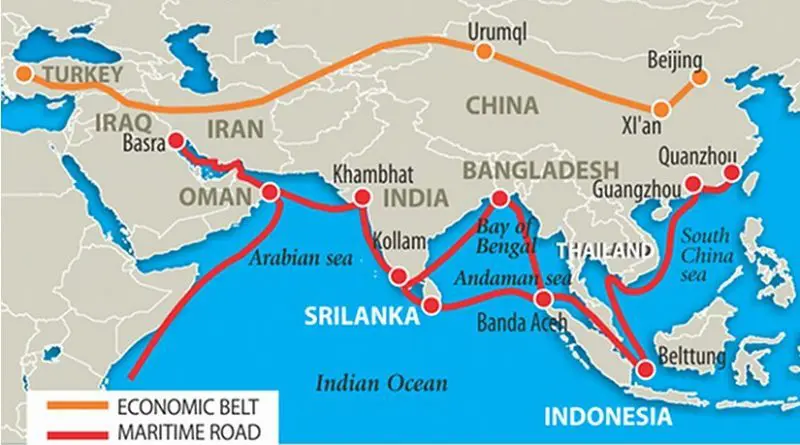China’s Belt And Road Initiative: Powerful Vision In Increasingly Fragmented World
China’s One Belt, One Road initiative offers a powerful vision for connectivity and growth across multifarious borders and dimensions – one that will touch the lives of millions excluded from the global economy, participants heard Wednesday at the 11th Annual Meeting of the New Champions in Dalian.
The most ambitious infrastructure and connectivity project to date, China’s One Belt, One Road development vision could see up to $8 trillion invested across 68 countries in the next two decades.
“One Belt, One Road offers a powerful vision in today’s world,” noted Ahsan Iqbal, Minister of Planning and Development of Pakistan. In a country where the China-Pakistan Economic Corridor, part of One Belt, One Road, is expected to generate $57 billion in investment, the effects are already being felt with significant capital flows in the energy and telecommunications sectors – and with Mandarin Chinese now the most studied language in the South Asian nation.
Minister Iqbal noted that as One Belt, One Road connectivity is actualized, the process will stimulate inclusive growth that will “touch the lives of millions of people who are cut off from the mainstream.”
In a world that feels increasingly fragmented, Zhang Tao, Deputy Managing Director, International Monetary Fund (IMF), Washington DC, reckoned: “The bottom line is that the Belt and Road initiative has the potential to strengthen cross-border dialogue and foster multinational cooperation. This is very important in today’s increasingly interconnected world, and more important than ever in the next few years.”
Danny Alexander, Vice-President and Corporate Secretary of the Asian Infrastructure Investment Bank, Beijing, observed that China’s vision will enable developing countries in Asia to “leapfrog” and that the ambitious framework has the potential to secure the region’s economic security for decades to come.
“The success of these strategies, to invest in infrastructure and promote connectivity, will be key in determining the prosperity of Asia over the next 20-25 years,” he said, before offering a caveat: “The stakes are high, so it matters that we work in partnerships.”
Encompassing more than 60% of the global population and 30% of GDP, and facilitating deepened trade and logistic links, particularly among landlocked countries, Harld Peters, Senior Adviser, Asia-Pacific Region, UPS, People’s Republic of China, said he is also bullish on the One Belt, One Road framework, but cautioned that small and medium-sized enterprises should not be left behind.
“It would be a shame if we were to have all this infrastructure established, only to see goods stop at borders,” noted Peters, “We need to combine both infrastructure with trade facilitation. Only when we combine the two will we be successful.”
Describing the One Belt, One Road vision as mutually beneficial, Ann Sim, Senior Minister of State for Trade and Industry of Singapore, said approaching the exciting potential of connectivity in the spheres of infrastructure and finance and deepening people-to-people links will require strong policy-steering and coordination, but also a degree of flexibility. “In the case of Singapore, I would say that we see a value in having frameworks,” she said, “But, at the same time, we see the value in moving ahead with experiments and demonstration projects.”
The World Economic Forum’s 11th Annual Meeting of the New Champions is taking place on 27-29 June in Dalian, People’s Republic of China.

